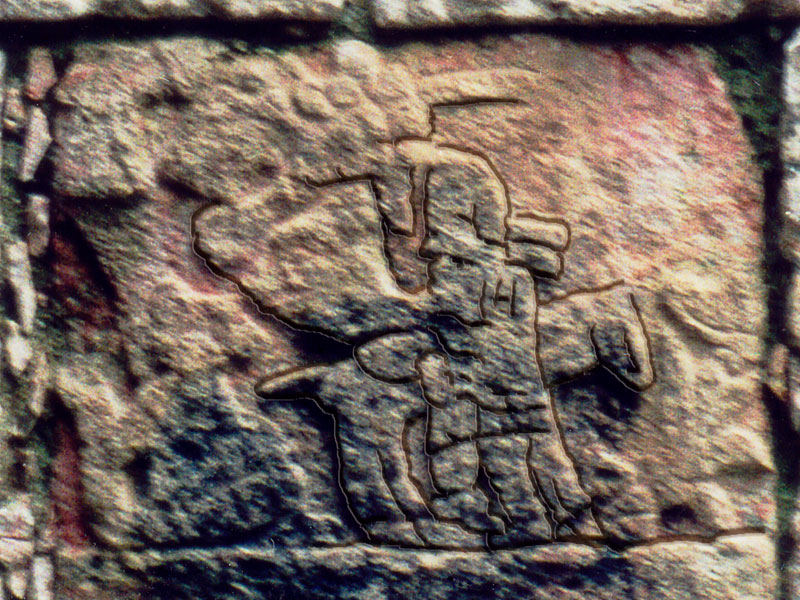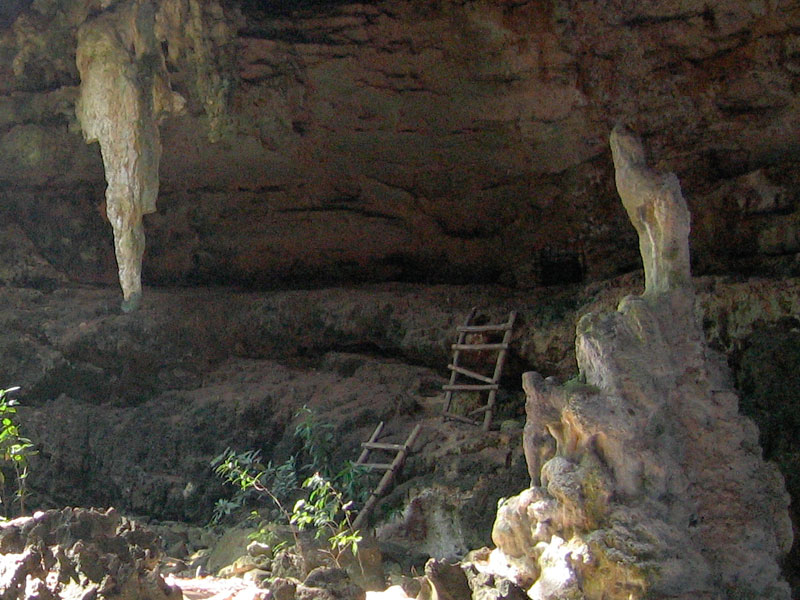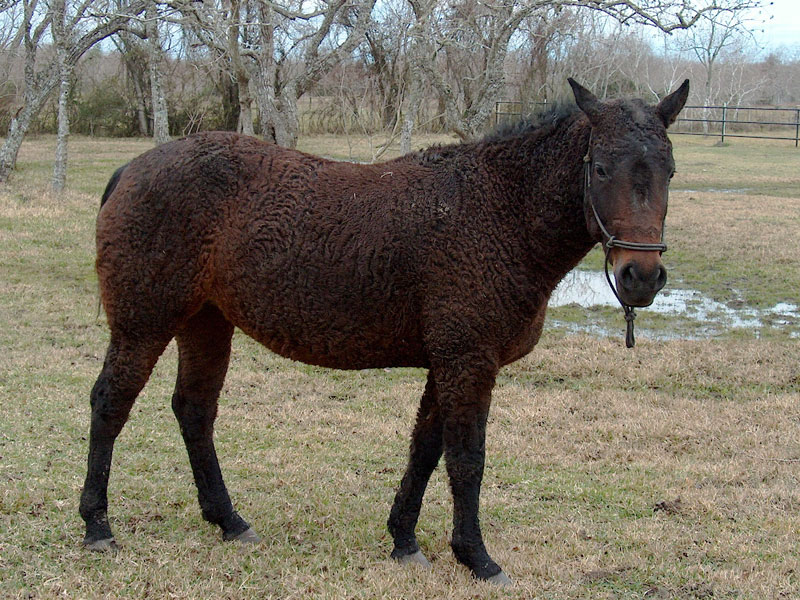"And it came to pass that we did find upon the land of promise, as we journeyed in the wilderness, that there were beasts in the forests of every kind, both the cow and the ox, and the ass and the horse, and the goat and the wild goat…” (1 Nephi 18:25)
With these few words, Nephi ignites a long-running modern controversy. The mere mention of horses in Ancient America has made the Book of Mormon a target for critics over the years. After all, everyone knows that horses were introduced to the Americas by the Spanish, right? Were we not all taught that in school? LDS apologists have offered several possible explanations to answer this apparent anachronism. A popular one is that Nephi is using his word for horse to describe a large mammal unknown to him. This is a valid response, as new animals can be hard to name. The hippopotamus got its name from Greeks who decided to call this strange animal a water horse, although no one today would confuse the two. Did Nephi and subsequent record keepers simply do the same thing? It is interesting to note that of the six animals mentioned, there are really only three major kinds described: ox and cow are merely gender-specific terms for bovines, ass and horse are really just about the same thing, and what is the difference between a goat and a wild goat? The names Nephi chose would make a great topic for further study, but that is beyond the scope of this paper.
The largest native mammal commonly known today to have inhabited these areas anciently is the Tapir. The suggestion has been made that perhaps this is Nephi's horse. On the face, this is not a bad argument. According to the Spanish priest Diego de Landa, “There are Tapirs ….. they are of the size of ordinary mules, very light-footed, with cloven hoofs like cattle ….. they [the Maya] call them Tzimin, and from that they have given this name to horses."1
.jpg)
It is interesting that the Maya used their own word for Tapir to refer to Spanish horses. They had no other name for these strange animals, so they chose the next best thing: naming them after an animal they already knew that they found similar. Did Nephi do the same thing in reverse by calling Tapirs horses? All in all, this explanation makes sense, but it does not win over many opponents of the Book of Mormon. And it seems like we should be able to put forth a better challenge to the critics.
What if Nephi and his successors really did write about horses as we know them? The claim has been made by various LDS authors that horses are seen in Mesoamerican art from time to time,2 but these images are sometimes hard to track down and often very subjective. One intriguing example is found at Chichén Itzá. It is located on the side of a building called the Temple of the Wall Panels. On its north and south sides, it has blocks carved with scenes of various animals. One of the blocks shows an image that has been interpreted by some LDS scholars to be a man standing next to a small horse. That image is shown here with an outline added to show what details remain in the eroded façade. It certainly may be a horse, but it is hard to know for sure. The carving is definitely pre-Columbian, but most of the construction at Chichén dates to the 9th and 10th centuries AD, long after the close of the Book of Mormon. This would mean that knowledge of horses survived for a long time, if not the actual animals themselves. If it is not a depiction of a horse but some other real animal, than the only other known candidate is a tapir. These and other rare images are fascinating, but they should not be taken as proof. They do not convince the critics, either.

Fortunately, there is hard evidence of modern horses in ancient Mesoamerica. What may be surprising is that this is not a controversial claim and it has been known for some time. In 1895, Henry Mercer explored 29 caves in the Yucatán Peninsula looking for evidence of prehistoric habitation. In the Loltún Caves of the Yucatán he found the bones of many ancient animals, but no fossils.3 Between this early dig and 1977, ancient horse bones were found in the Huechil Grotto of this same cave system. Exactly how they got there is unknown, but it is probable that they were brought in by early inhabitants, since it is believed that early man hunted native horses.4 Because these bones are not fossilized,5 there is a limit to how old they might be. A tantalizing (but rarely mentioned) sidenote is that these horse remains in some caves were found alongside potsherds and other human artifacts.6 We have not found any carbon dating information on them, but it is doubtful that people outside the Church would be as interested in this subject as we are. The fallacy that horses are not native to this hemisphere and were introduced by Europeans still lingers with us, even though these and other examples of ancient horses have been known for many decades. The fact that they were found in this area of the cave almost certainly indicates contact with ancient man; this can no longer be denied. The only question is when and why (or if) horses became extinct on this hemisphere.

Other horse bones have been discovered in nearby areas of the Yucatán. In addition to Mercer's finds, other caves have yielded similar remains. Horse teeth were found in Cenote Ch'en Mul at Mayapán, a major Postclassic site on the Yucatan Peninsula. Like the earlier examples, they were found along with pottery fragments, and judging by their stratigraphic location and degree of mineralization, are thought to be pre-Columbian as well. By at least 1957, this information had been published in scientific journals. Experts had to admit that there were indeed pre-Columbian horses in the Yucatán, but did not wish to imply that they were known among the Maya, vaguely stating that the remains must be from a pre-Mayan time. Oddly enough, this seemingly revolutionary information was relegated to one page of the General Notes section near the end of the Journal of Mammalogy.7 We found it sandwiched between “Three Additional Records of Antlered Female Deer” and “Longevity of Captive Mammals.”

Although this information has been available for decades, critics have long pointed to the mention of horses in the Book of Mormon as an anachronism and evidence of its modern invention. In the past, their inclusion seemed a bit problematic, but it should be remembered that the prevailing belief during Joseph Smith's time (and to some degree, still in ours) was that there were no horses in America before the arrival of the Spanish, so why mention them at all? Arnold Friberg's illustrations notwithstanding, the Book of Mormon does not ever say that anyone rode a horse. In fact, references to them are infrequent. According to Ether 9:19, the Jaredites had horses. They apparently were still around when Lehi's party landed, because Nephi briefly mentions them along with other large animals in 1 Nephi 18:25. A few generations later, Enos 1:21 relates that the Nephites had many horses among their flocks. The Lamanite king Lamoni is described as having horses and chariots in Alma 18:9-10. In 3 Nephi 6:1, the Nephites still had horses among their animals when they returned to their lands after dealing with the Gadianton robbers. Now that we know that horses did live on at least the Yucatán Peninsula while it was inhabited, is there any way of knowing how long they were there? The report in Journal of Mammalogy simply states that it was during a pre-Mayan time. That is a wide open statement.
Mayapán was the last great Mayan capital, flourishing after the collapse of Chichén Itzá until about 1440 AD.8 It is safe to say that there no horses in the Yucatán or elsewhere in Mesoamerica by then. But what if some horses survived in remote enough areas and in small enough numbers not to have been noticed by the Spanish conquerors? Such a possibility exists. A breed of horse, known alternately as the Bashkir Curly or the North American Curly, is unusual not only for its curly, hypoallergenic coat. Its origins are still unknown and the subject of much debate. Bashkir is a region in Russia, but it does not have curly coated horses. However the Lokai, a breed from Tajikistan, sometimes has a curly coat. The North American Curly could have descended from this or other Asian breeds, but in the early 1800s, Charles Darwin noted curly horses in South America long before any known documentation of their transportation from Asia.9 No connection can be demonstrated between American Curlies and the Bashkirs.10 How the Curly horse got to the Americas is still a mystery, despite ongoing study and research. There is even some speculation outside the LDS community among horse experts that Curlies may have crossed over the Bering Strait from Asia anciently11 and survived until modern times, becoming essentially a native American breed. They then may have gone undetected by European settlers until the 19th century. Could these be Nephi's horses?

It should go without saying that the Mesoamerican cultures that are currently identified did not have draft animals as far as we know. Nor is there any evidence of chariots beyond litters born by human servants, so King Lamoni's chariots and horses are still a bit of an anomaly. Chariots are only mentioned this one time among the Lamanites and once among the Nephites, used during a large-scale evacuation. Small wheeled figures identified as toys have been found and are readily acknowledged by non-LDS scholars,12 but no large-scale, practical examples have been found. What were these wheeled animal figures? It has been suggested that they were not toys if they were buried with adults, so there may be important symbolism behind the shape of the wheel.13 Why these post-Book of Mormon cultures that were advanced in so many ways apparently did not put into practice this principle they clearly understood is still a mystery that has not been fully explained.

Perhaps some ancient American cultures did utilize the wheel without leaving any trace of its use that has survived the centuries. Maybe Book of Mormon ‘chariots’ did not have wheels at all and were not used as personal transportation, since their purpose is never fully identified. Perhaps native horses that had been in this area since prehistoric times survived and were domesticated somewhat by some Book of Mormon peoples. We may never know for sure, but the finds at Loltún and other locations in the Yucatán affirm that horses were n the Americas anciently and served at least one purpose for early man, that of food. It is not unreasonable to suggest that a population survived longer than is currently believed. The fact that ancient, but not fossilized, native horse bones and teeth have been found in connection with pottery fragments makes this hypothesis even more plausible. The last mention of horses in the Book of Mormon occurs in roughly 26 AD. Were they extinct by the end of the record? It is possible. This could explain why the Aztecs and Maya that encountered Spanish horses were so confused by them, having never seen anything like them before. The hard evidence of pre-Columbian horses means that we should not be apologetic about their appearance in the Book of Mormon, nor do we have to go to extraordinary lengths to explain them. There are still some controversial elements in the scriptural record that we may never be able to explain, but the existence of horses in Ancient America is not one of them. The case is closed on that subject. When Nephite record keepers wrote about horses, they apparently meant horses just as we would understand them. The only remaining question is whether they had curly coats or not.
Notes:
1 Diego de Landa, Yucatan Before and After the Conquest (New York: Dover Publications, 1978), p. 109.
2 See Diane E. Wirth, A Challenge to the Critics (Bountiful: Horizon Publishers, 1986), pp. 53-55.
3 Andrew Coe, Archaeological Mexico (Chico: Moon Publications, 1998), p. 304.
4 Ibid., pp. 304, 321.
5 Ibid., p. 322.
6 Clayton E. Ray, “Pre-Columbian Horses From Yucatan,” Journal of Mammalogy vol. 38 no. 2 (May 1957), p. 278.
7 Ibid.
8 Simon Martin and Nikolai Grube, Chronicle of the Maya Kings and Queens (London: Thames & Hudson, 2000), p. 228.
9 02-02-2009. <http://www.curlyhorses.org/index.php?page=curliesofworld> and <http://www.curlyhorses.org/index.php?page=faqcurly>.
10 02-02-2009. <http://www.ansi.okstate.edu/breeds/horses/bashkircurly/index.htm>.
11 02-02-2009. <http://www.abcregistry.org/about.asp>.
12 Mary Miller and Karl Taube, An Illustrated Dictionary of the Gods and Symbols of Ancient Mexico and the Maya (London: Thames & Hudson Ltd, 1993), p. 14.
13 See Diane E. Wirth, Decoding Ancient America (Springville: Horizon Publishers, 2007), pp. 61-63.
This article adapted from the forthcoming An LDS Guide to the Yucatán, by Daniel Johnson, Jared Cooper, and Derek Gasser, authors of An LDS Guide to Mesoamerica.
Editor's notes:
The Book of Mormon does not claim that horses were universally known in the Americas throughout pre-Columbian history. Rather, they were known only to some peoples before the time of Christ in a few limited regions of the New World. Additionally, the Book of Mormon never says that horses were ridden or used in battle. It may be inferred that at times horses may have been used by the elite as a draft animal (see, for example, Alma 18:9; 3 Nephi 3:22).
According to Hunter and Ferguson, the claim made by the Book of Mormon that horses were on this continent and used in ancient America for purposes similar to the uses we make of them today finds strong support in the numerous fossil remains of horses that have been obtained from the asphalt deposits of Rancho La Brea in southern California. Of course, it is claimed that those fossil remains pre-date Book of Mormon times. However, there is no logical reason for believing, since horses were here prior to the arrival of the Jaredites and the Nephites, that horses could not have still been in America during the period in which those ancient civilizations flourished.
There is the possibility that the horses were Shetland pony size, not large enough to be ridden by a full-grown man, but strong enough that 2 or 4 of them could pull a chariot, if the chariot had wheels or sled runners, as opposed to the litter carried by 4 slaves or servants as is known to have occurred and as shown in The Testaments film.
Horses were among the more common types of hoofed mammals on the North American continent during Pleistocene time, and several distinct species have been described from fossil remains. The abundance and widespread distribution of horses in North America make the apparent disappearance of the group in this region prior to the advent of the white man an added and an unusual feature of their long and eventful career.[Milton R. Hunter and Thomas Stuart Ferguson, Ancient America and The Book of Mormon, pp. 312-313]
Douglas K Christensen and Stephen L Carr, editors
.jpg)







